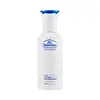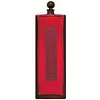What's inside
What's inside
 Key Ingredients
Key Ingredients

 Benefits
Benefits

 Concerns
Concerns

 Ingredients Side-by-side
Ingredients Side-by-side

Water
Skin ConditioningDipropylene Glycol
HumectantGlycerin
Humectant1,2-Hexanediol
Skin ConditioningHexyldecyl Ethylhexanoate
EmollientPentaerythrityl Tetraethylhexanoate
EmollientAlcohol Denat.
AntimicrobialCentella Asiatica Leaf Extract
Skin ConditioningBetaine
HumectantPanthenol
Skin ConditioningBeta-Glucan
Skin ConditioningSodium Hyaluronate
HumectantButylene Glycol
HumectantAcrylates/C10-30 Alkyl Acrylate Crosspolymer
Emulsion StabilisingTromethamine
BufferingCyclopentasiloxane
EmollientDimethicone
EmollientTrisodium EDTA
Caprylic/Capric Triglyceride
MaskingCinnamomum Camphora Bark Oil
MaskingLitsea Cubeba Fruit Oil
MaskingCitrus Aurantium Bergamia Fruit Oil
MaskingOriganum Majorana Leaf Oil
MaskingCymbopogon Martini Oil
MaskingCitrus Aurantium Dulcis Flower Oil
AstringentWater, Dipropylene Glycol, Glycerin, 1,2-Hexanediol, Hexyldecyl Ethylhexanoate, Pentaerythrityl Tetraethylhexanoate, Alcohol Denat., Centella Asiatica Leaf Extract, Betaine, Panthenol, Beta-Glucan, Sodium Hyaluronate, Butylene Glycol, Acrylates/C10-30 Alkyl Acrylate Crosspolymer, Tromethamine, Cyclopentasiloxane, Dimethicone, Trisodium EDTA, Caprylic/Capric Triglyceride, Cinnamomum Camphora Bark Oil, Litsea Cubeba Fruit Oil, Citrus Aurantium Bergamia Fruit Oil, Origanum Majorana Leaf Oil, Cymbopogon Martini Oil, Citrus Aurantium Dulcis Flower Oil
Water
Skin ConditioningButylene Glycol
HumectantAlcohol Denat.
AntimicrobialGlycerin
HumectantMethyl Gluceth-10
EmulsifyingDipropylene Glycol
HumectantBetaine
HumectantMethylparaben
PreservativeCyclodextrin
AbsorbentPhenoxyethanol
PreservativeSodium Metaphosphate
BufferingSodium Hyaluronate
HumectantCarbomer
Emulsion StabilisingParfum
MaskingPEG-60 Hydrogenated Castor Oil
EmulsifyingXanthan Gum
EmulsifyingPotassium Hydroxide
BufferingAcrylates/C10-30 Alkyl Acrylate Crosspolymer
Emulsion StabilisingArginine Hcl
Skin ConditioningMagnesium Chloride
PCA
HumectantCalcium Chloride
AstringentWater, Butylene Glycol, Alcohol Denat., Glycerin, Methyl Gluceth-10, Dipropylene Glycol, Betaine, Methylparaben, Cyclodextrin, Phenoxyethanol, Sodium Metaphosphate, Sodium Hyaluronate, Carbomer, Parfum, PEG-60 Hydrogenated Castor Oil, Xanthan Gum, Potassium Hydroxide, Acrylates/C10-30 Alkyl Acrylate Crosspolymer, Arginine Hcl, Magnesium Chloride, PCA, Calcium Chloride
Ingredients Explained
These ingredients are found in both products.
Ingredients higher up in an ingredient list are typically present in a larger amount.
Acrylates/C10-30 Alkyl Acrylate Crosspolymer is a synthetic polymer. It is used to thicken and improve the texture of products. Due to its properties, it can prevent water and oil ingredients from separating.
Alcohol Denat. is an alcohol with a denaturant property. It is created by mixing ethanol with other additives.
This ingredient gets a bad rep because it is irritating and drying - mostly due to its astringent property. Astringents draw out natural oils in tissue, constricting pores and leaving your skin dried out.
However, alcohol denat. is not all that bad.
Due to its low molecular weight, alcohol denat. tends to evaporate quickly. One study on pig skin found half of applied alcohol evaporated in 10 seconds and less than 3% stayed on skin.
This also helps other ingredients become better absorbed upon application.
Studies are conflicted about whether this ingredient causes skin dehydration. One study from 2005 found adding emollients to propanol-based sanitizer decreased skin dryness and irritation. Another study found irritation only occurs if your skin is already damaged.
Small amounts of alcohol are generally tolerated by oily skin or people who live in humid environments.
The rule of thumb is if this alcohol is near the end of an ingredients list, it will probably not affect your skin much.
Also...
This ingredient has antimicrobial and solvent properties.
The antimicrobial property helps preserve products and increase their shelf life. As a solvent, it helps dissolve other ingredients.
Other types of astringent alcohols include:
Learn more about Alcohol Denat.Betaine is a common humectant (a substance that promotes retention of moisture). It's known to be gentle on the skin and can help balance hydration.
This ingredient is best for improving hydration and soothing irritated skin. Studies also show it helps even out skin tone.
Fun fact: Betaine is naturally created in the skin and body. The kind found within cosmetic products can be either plant-derived or synthetic.
Another name for betaine is trimethylglycine.
Learn more about BetaineButylene Glycol (or BG) is used within cosmetic products for a few different reasons:
Overall, Butylene Glycol is a safe and well-rounded ingredient that works well with other ingredients.
Though this ingredient works well with most skin types, some people with sensitive skin may experience a reaction such as allergic rashes, closed comedones, or itchiness.
Learn more about Butylene GlycolDipropylene Glycol is a synthetically created humectant, stabilizer, and solvent.
This ingredient helps:
Dipropylene glycol is technically an alcohol, but it belongs to the glycol family (often considered part of the ‘good’ alcohols). This means it is hydrating and gentle on skin unlike drying solvent alcohols like denatured alcohol.
As a masking agent, Dipropylene Glycol can be used to cover the smell of other ingredients. However, it does not have a scent.
Studies show Dipropylene Glycol is considered safe to use in skincare.
Learn more about Dipropylene GlycolGlycerin is already naturally found in your skin. It helps moisturize and protect your skin.
A study from 2016 found glycerin to be more effective as a humectant than AHAs and hyaluronic acid.
As a humectant, it helps the skin stay hydrated by pulling moisture to your skin. The low molecular weight of glycerin allows it to pull moisture into the deeper layers of your skin.
Hydrated skin improves your skin barrier; Your skin barrier helps protect against irritants and bacteria.
Glycerin has also been found to have antimicrobial and antiviral properties. Due to these properties, glycerin is often used in wound and burn treatments.
In cosmetics, glycerin is usually derived from plants such as soybean or palm. However, it can also be sourced from animals, such as tallow or animal fat.
This ingredient is organic, colorless, odorless, and non-toxic.
Glycerin is the name for this ingredient in American English. British English uses Glycerol/Glycerine.
Learn more about GlycerinSodium Hyaluronate is hyaluronic acid's salt form. It is commonly derived from the sodium salt of hyaluronic acid.
Like hyaluronic acid, it is great at holding water and acts as a humectant. This makes it a great skin hydrating ingredient.
Sodium Hyaluronate is naturally occurring in our bodies and is mostly found in eye fluid and joints.
These are some other common types of Hyaluronic Acid:
Learn more about Sodium HyaluronateWater. It's the most common cosmetic ingredient of all. You'll usually see it at the top of ingredient lists, meaning that it makes up the largest part of the product.
So why is it so popular? Water most often acts as a solvent - this means that it helps dissolve other ingredients into the formulation.
You'll also recognize water as that liquid we all need to stay alive. If you see this, drink a glass of water. Stay hydrated!
Learn more about Water